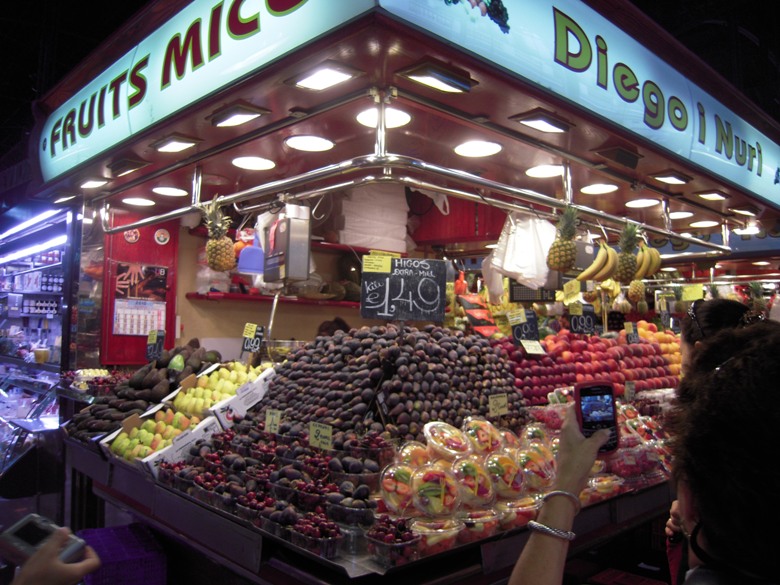Trying to teach a teen on the virtues of travel


The sheer size of the place can’t help but impress even the most jaded teen.
Some of the towers soar more than 100 feet. The massive pillars look like tree trunks, stone chameleons, tortoises and turtles. Welcome to Antonin Gaudi’s unfinished masterpiece, the Sagrada Familia, Barcelona’s most famous site and one of Spain’s most visited. It’s a great place for a scavenger hunt with the kids. (Find the fruit carved on top of the towers, the young stone musicians, the birds. Can you find Gaudi’s face? )
More than 40 years after the eccentric and revered architect’s death — he was struck by a tram — work still continues on the huge church first begun in 1882. The project continued even after anarchists burned Gaudi’s studio during the Spanish Civil War. Luckily, he had made plaster models of the church (we see them in the museum at the site) and though they were also smashed, they were able to be put back together so the work could continue.
Barcelona is where many families board Mediterranean cruises and it’s a great city to explore with teens and younger kids from museums and parks to the guaranteed-to-amuse street entertainers along the famous Rambla. Still, you have to know when to call it quits even at such Great Sites. On a subsequent visit to Sagrada Familia with two young teens, we didn’t even make it inside because they deemed the line too long.
You don’t have to worry about lines fortunately at another Gaudi site—the Parc Guell. Originally designed as a housing complex, it was Gaudi’s largest work in Barcelona and guaranteed to fascinate everyone in the family with its fantastically shaped roofs, a house that looks as if its made out of candy and the famous serpentine bench fashioned out of broken mosaic. Unfortunately, the project was a bust. The only three houses built were for Gaudi, the developer and the developer’s lawyer.
We all love the giant mosaic dragon. “Cool,” my 13-year-old niece says. Sometimes when trying to show kids new cities, you can’t hope for more than that.
They can’t help but be intrigued at Barcelona’s famous Boquera market, with hundreds of stalls one of the largest in Europe and smack in the middle of the mile-long La Rambla where you’ll be alternately entertained by jugglers and human statues. Ever see a human flower statue? A bird market?At the market, watch the kids as they eye hundreds of varieties of gummies.
If you plan to do a lot of touring, get the Barcelona card (www.barcelonaturisme.com), which includes free public transportation, museum admission, restaurant discounts and more. Walk off your jet lag by taking in all the chic couples walking along the beach, the city’s famous art nouveau architecture, the art, (Picasso lived here as a teen), the ancient Gothic Quarter.
The kids will also give a thumbs up to Montjuic, one of Barcelona’s largest recreation areas, rising some 700 feet above the south side of the city. We holed up overnight at the Hotel Arts Barcelona a famous icon of the Barcelona skyline and a short walk from the beach and many of the city sites. There’s nothing like a luxury hotel with a pool when you are jet lagged and traveling with kids.
But before we hit the pool — or fall asleep — a little culture is in order.
MY PICK: Museu Picasso It’s housed in three spectacular stone mansions in the historic quarter of the city and showcases works from the artist’s early years, his Blue Period and early works from Barcelona. Picasso moved here in 1895 at the age of 14 and donated some 2,500 works to the museums in 1970. (Show your young artists what he did as a kid!)
Donkey or Bull our amiable guide Bernard Liso asks the next morning. The bull, of course is the national symbol of Spain. The donkey is the symbol of the Catalans and people here speak Catalan as well as Spanish.From its earliest days, Barcelona has been linked to France, thus the emphasis here on Catalan — Catalonia lies midway between France and Spain.
But we are in Spain and along the Sea so I tell the gang we’re having Paella for lunch, the famous Spanish rice dish that’s usually topped with chicken, sausage and shellfish. We head to a small restaurant in the old historic quarter of the city, Los Caracoles. I’m completely charmed by the mosaics and the open kitchen, the way the rooms of the restaurant wind up around an old staircase. My young niece unfortunately isn’t.
“I just won’t eat,” she says after perusing the menu. There’s no pasta and she doesn’t want anything else. The rest of us dig into our paella. She agrees to taste it, as long as I take the shells off the shrimp. Not bad, she says, helping herself to more rice.
I just sip my sangria and don’t say a word. A few months later, she tells me she’s already decided where she wants to go abroad when she’s in college –Barcelona.
